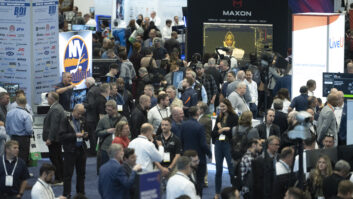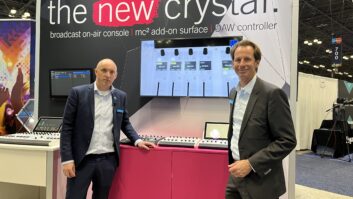A construction permit for a new translator in Neenah, Wis., has been granted to an applicant — despite objections from a nearby FM station that everything from the atmosphere to a nearby lake could cause potential interference issues.
In two informal objections submitted to the Federal Communications Commission in 2013 and 2014, Seehafer Broadcasting said that a translator proposed by Midwest Communications in Neenah would cause interference to Seehafer’s Class A station WLKN(FM) on Channel 251 at 98.1 MHz in Cleveland, Wis.
Seehafer pointed to a section within the FCC rules that states that no FM translator application would be accepted for filing if the proposed operation would involve overlap of predicted field strength contours with any other authorized facility. Seehafer stated that a significant portion of WLKN listeners reside in the area between the two tower sites; if the proposed translator is granted, this would result in interference to an already established WLKN(FM) listener base, the licensee said.
In this first objection, Seehafer also stated that a combination of the proposed effective radiated power of 250 W — together with the effects of ducting and temperature inversions across nearby Lake Winnebago — will result in WLKN’s signal being unheard in areas that the station depends upon for advertising and income. Seehafer also pointed out that a Longley-Rice study would show significant overlap if the Lake Winnebago area was included.
The FCC shot down that suggestion, however, saying that the use of Longley-Rice, atmospheric ducting or temperature inversion are unnecessary. “For the purpose of determining contour overlap, translator applicants are simply required to show compliance with the overlap provisions of Section 74.1204(a) by using the standard prediction method,” the Media Bureau said in its finding.
In a second objection, Seehafer said that the proposed translator application fails to comply with another set of rules — namely that the predicted 1 mV/m field strength contour of the translator will overlap a populated area already receiving a regularly used, off-the-air signal and will result in interference to the reception of such signal.
But to prove that, an opponent must provide a laundry list of items: names and addresses of those listeners, proof that the address of each listener falls within the 60 dBu contour of the proposed translator station, evidence that the person listens to the full-service station at that location and evidence that grant of the authorization will result in interference. In this case, the U/D signal strength radio methodology — short for undesired-to-desired — may be used to demonstrate the potential for interference.
But although Seehafer provided the names and addresses of three WLKN listeners, the licensee failed to include a plot of the listeners within the 60 dBu contour of the proposed translator. As a result, the commission could not conclude that the listeners were definitively within that contour, and the bureau therefore dismissed the second objection.
However, Seehafer’s concerns did not fall on deaf ears. The Media Bureau noted in its most recent communication with Midwest Communications on Nov. 27 that if the translator does cause interference to WLKN, the translator will be required to eliminate the interference or cease operation.












